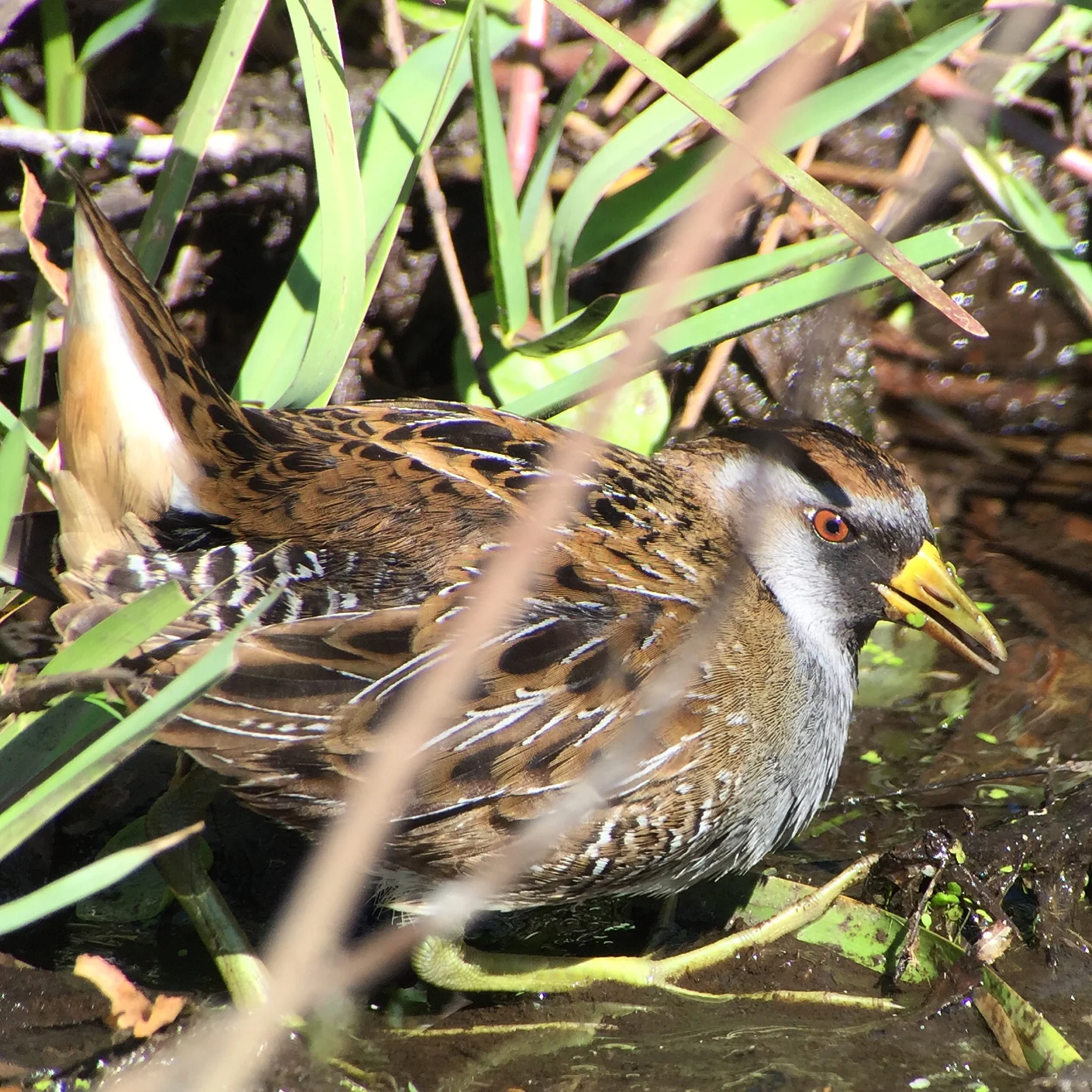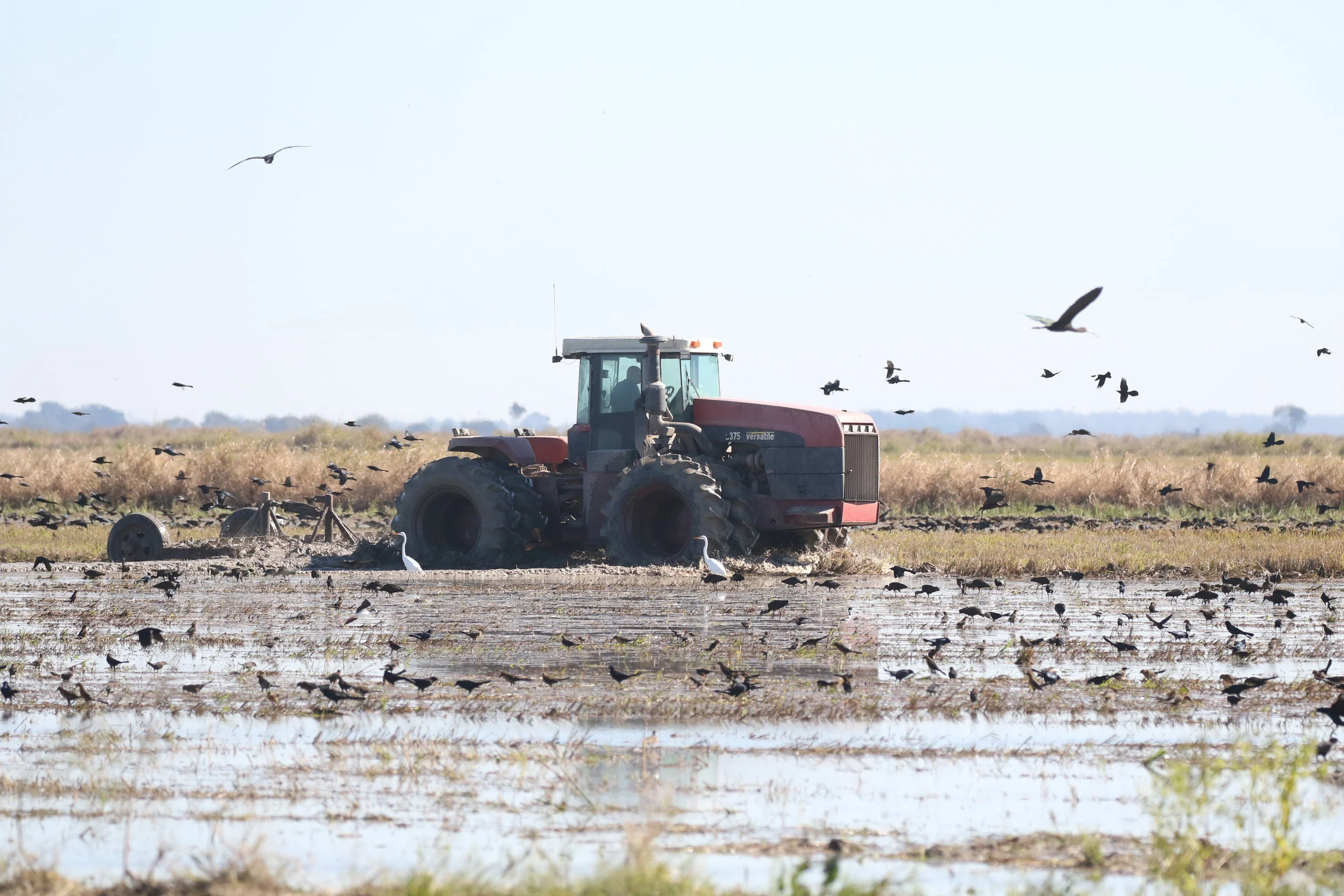The Day I Saw Too Many Rails
Over the course of the year, several days stick out in my memory as major birding experiences that I won't soon forget. Waking up among Sage Grouse in Wyoming, hiking the Grand Canyon, my first pelagic trip are some of the many highlights of the year. I am confident I can add yesterday to that list also, because it was the day I saw too many rails.
A Sora slipped out of the marsh for a few brief seconds earlier this year in Texas, allowing me to take an iphone / scope photo.
What is a rail, you might ask? It is a type of ground-dwelling bird in the family Rallidae that include the Sora, Virginia, King, Yellow, and Black Rail. They are secretive marsh birds that prefer running when threatened, making them difficult to see when disturbed. Their secretive habits seldom leave them out in the open for birders to see, making a sighting a special treat. Most secretive and shy of the rails in North America are the Yellow and Black rails, the latter being almost grail-like to birders. This year I've seen nearly all the rail species except black rail which is a heard only on my list, and I wouldn't have heard it if I wasn't with another birder who was using playback. I've tried multiple locations around the country to see Black Rails, but to do this without using playback is nearly impossible. I'll try!!!
Since I was in Alaska during the Rails and Rice Festival several weeks ago, I missed my chance to ride on a combine and see Yellow Rails in the flooded rice fields of Louisiana as part of the festival. Registration fills up fast, so if you want a shot at doing this amazing experience (I highly recommend it) be sure to get on board for next year as soon as possible!
Yesterday mid-morning I pulled up to a rice field in Louisiana, meeting my buddy Dustin, who was ready for a long day of work on the combine. A born-and-bred farmer, Dustin has been driving combines since since he was heavy enough to activate the seat. His passion for what he does is contagious, and he graciously taught me everything I wanted to know about how combines work, and explained the methodology of what he was doing. I even helped take apart and clean the belts, which was dirty/dusty work, but so worth helping out, and it only enhanced the experience I was having. We sat in the cab listening to country music as he drove around the first flooded field, cutting rice, and flushing birds. Until recently, he was blissfully unaware of how special the Yellow Rail was to birders, as he's seen them since he was too young to drive combines, every year while harvesting. Dustin was great at spotting them, and honking the horn on birds that were reluctant to flush, giving them some extra encouragement to get a move on.
The next field over was being worked with a tractor, dredging up lots of tasty treats for the birds.
I sat outside the cockpit/cab of the combine on a specially-made seat, in order to accommodate birders for the Rail Festival. As we plunged into the wet fields, birds started immediately flushing from in front of the combine head. Killdeer, then various species of sparrows, Sedge Wrens, then a small bird with white patches in the wing- a Yellow Rail! It hadn't even been 10 minutes! I got great binocular views, and was ready with my camera for the next one. And the next. And the next. They kept coming! I counted carefully, not counting birds that flushed into the uncut sections of field that we'd get on our next pass. I probably under-counted, but my total was pretty amazing (hence "too many") Check out my complete eBird list for numbers!
One of the first birds flushed- a Yellow Rail!
Often Yellow Rails don't flush at all, they run away undetected. I think this one crash-landed...
The largest rail species, the King Rail flushes away from the combine into the taller grass.
Raptors were abundant above the rice fields, which made my day even better. I was constantly switching back and forth from spotting rails to identifying the raptors following the combine. At times, I saw nearly a dozen hawks hunting around the field we were harvesting. The highlight for the day was watching a Yellow Rail flush right in front of the combine, fluttering up giving me a perfect view and then- snatched by a Redtail in a spectacular stoop from high above us. I didn't even see the hawk until it opened her wings, engulfing the rail. I had my camera up and managed a few shots of the rail-turned-snack as the hawk flew away. Nature is simply amazing, and I was left speechless at the sight I had just witnessed.
Red-tailed Hawk with a freshly-caught Yellow Rail.
A juvenile Red-tailed Hawk hovers behind the combine, searching for voles and mice.
A female Merlin ambushed sparrows flushed from in front of the combine, chasing them down.
I was treated to two different light-phase juvenile Swainson's Hawks- migrating south for winter.
At the end of the day, you'd think I was tired of sitting. However I was on a roll, and my excitement from the day fueled my drive north a couple hours before I settled down in a Wal-Mart parking lot for the night. It was a great day.
This morning, I drove for a few hundred miles, arriving at a prairie in southwest Missouri before nightfall. I'd been here before, vainly searching for Greater Prairie-Chickens in my younger years. Many birding memories came flooding back as I walked out onto the hilltop covered in bluestem and other prairie grasses. I crossed the hilltop sections searching for Smith's Longspurs, seeing and hearing only Northern Harriers floating over the field edges. I lay down in the grass, hoping a harrier might fly right overhead, but instead I heard the dry rattle call of a Smith's Longspur! Overhead, a single bird bounced high above, near a high-flying harrier then while I was watching it dove down right past my head, nearly hitting me. The bird flew so close I could hear the air rushing through its wings! I managed a couple quick diagnostic shots as it rose back into the sky, nearly a speck as the wind blew it back over the hill. I'm sure I'll see others as I return to search for Prairie-Chickens and owls tomorrow. For now, I'm signing off McDonald's wifi, crawling in my Subaru, and going to sleep. Thanks for following the adventure! Please feel free to 'Like' and 'Share' on Facebook, as it helps me gauge interaction and I can be sure to keep posts coming that you all enjoy!
This post was written and composed while driving using SIRI and compiled on poor McDonalds wifi later. If you find any unintended spelling/grammatical mistakes, please email thebirdingproject@gmail.com Thank you!











